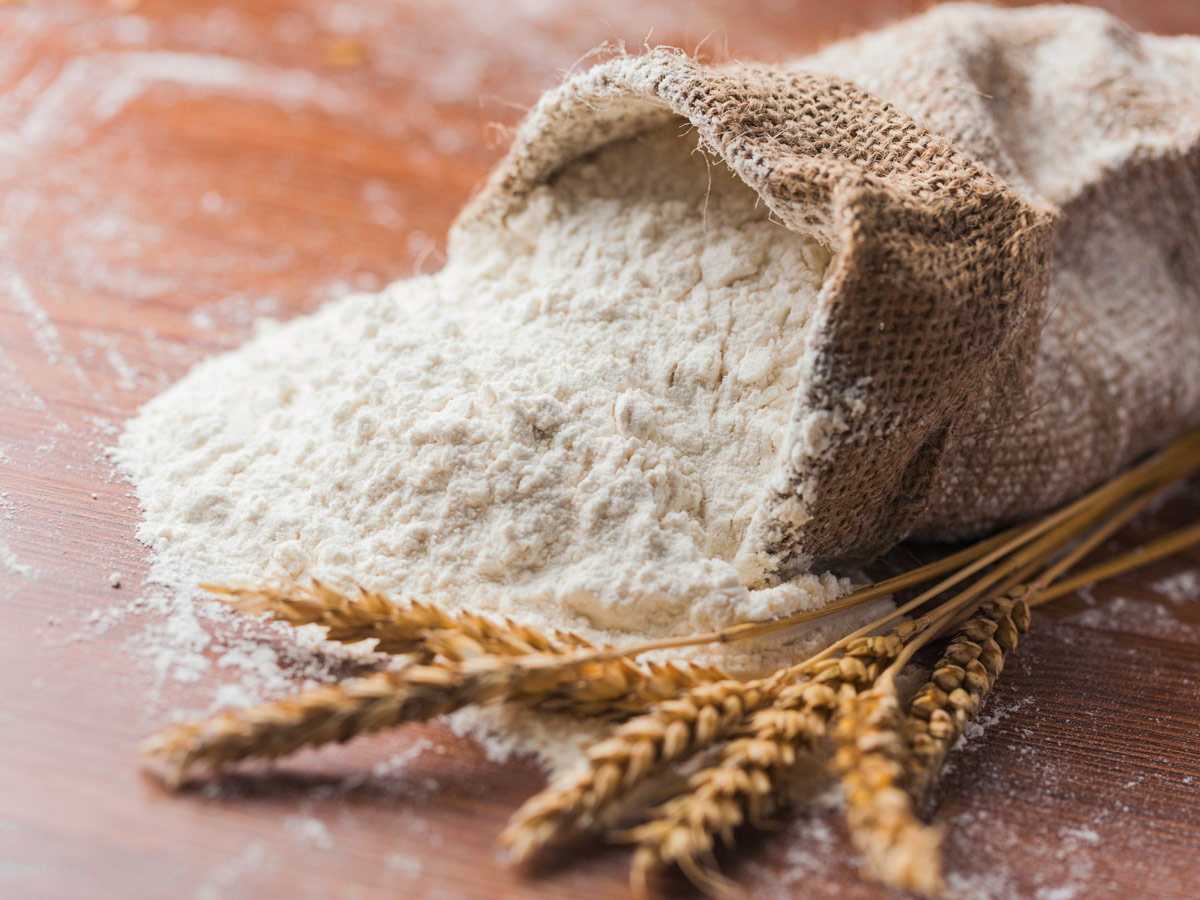

Cooking is an art and like most art forms it’s all about creativity, which includes finding creative solutions to culinary roadblocks. Recipes can often throw curveballs our way, with an unavailable ingredient or one that rarely ever graces your local supermarkets shelves. And try as the most methodical of us cooks might to stock our pantries, it’s natural to miss out vital ingredients on the shopping list. This substitution guide aims to provide flexible alternatives to the most common kitchen ingredients.
Dairy
| Ingredient | Substitution |
|---|---|
| Milk | Dilute heavy cream with water. Evaporated milk and light cream. Non-dairy milks such as oat milk, coconut milk, nut milk and soy milk are great substitutes. Powdered milk mixed in with water works as well. |
| Margarine | for 1 cup, substitute 1 cup butter or 1 cup shortening plus 1/4 teaspoon salt |
| Heavy cream | Blend 3/4 cup milk and 1/4 cup melted butter (unsalted) for 1 cup of heavy cream. Whisking 2 tablespoons of corn starch with 1 cup milk with 1 to 2 tablespoons corn starch or flour. Add 1 tbsp of flour to milk and thicken it. You can also use coconut milk or coconut cream as alternatives. Vegans can add 1/3 cup of olive oil to 2/3 cup of soy milk for 1 cup of heavy cream |
| Buttermilk | Add 1 tbsp of freshly squeezed lemon juice or vinegar to 1 cup of milk. Thin 3/4 cup of plain yogurt or sour cream with 1/4 cup water. You can also substitute buttermilk with equal parts of kefir (a yoghurt-like fermented milk drink made from kefir grains). |
| Butter | To fry or sauté use your choice of oil. Heavy cream or mascarpone work well as a substitute in recipes where butter is a baking or thickening agent. |
| Yoghurt | Thin Greek yoghurt with water, or substitute with buttermilk. Milk acidified with lemon juice or vinegar works too, especially marinades. Just add 1/4 less milk than the amount of yogurt recipe specifies. Sour cream works as a yoghurt substitute for salad dressings. |
| Other dairy products | Crème fraiche and mascarpone can be used interchangeably. Although, note that crème fraiche is tangier. |

Spices
| Ingredients | Substitute | |
|---|---|---|
| Allspice | Cinnamon, nutmeg, cloves | |
| Cajun Spice | Blend paprika, cayenne, garlic powder, pepper and oregano | |
| Cardamom | Ginger | |
| Chili powder | Blend 2 tbsp paprika, 1/2 tablespoon cumin, 1/2 tbsp garlic powder, 1 tsp onion powder, 1 tsp oregano, 3/4 tsp cayenne. Alternatively mix cayenne, cumin and paprika. | |
| Cinnamon | Apple pie spice blend, cloves, coriander, nutmeg, pumpkin pie spice blend | |
| Cayenne | Chili powder, dried chillies, red chilli flakes, hot sauce, paprika | |
| Cloves | Allspice, black pepper, nutmeg, cinnamon; or blend one part of nutmeg with one part of cinnamon. | |
| Coriander | Cumin, oregano, caraway seeds, fennel | |
| Cumin | Chili powder, coriander, curry powder, garlic powder, onion powder, turmeric | |
| Garam Masala | Chinese Five Spice, Cajun Spice; or make your own blend mixing cumin, coriander, cardamom, pepper, cinnamon, cloves, and nutmeg | |
| Fennel | Anise, caraway, cumin or dill | |
| Ginger | allspice, cardamom, cinnamon, mace, or nutmeg, pumpkin pie spice | |
| Mustard seeds | Caraway seeds | |
| Mustard (powder) | Turmeric, wasabi powder, horseradish powder | |
| Nutmeg | Ground cinnamon, Allspice, cloves, ground ginger | |
| Paprika | Cayenne pepper, chili powder, chili flakes | |
| Saffron | Safflower, turmeric, sweet paprika, cardamom, annatto | |
| Turmeric | Saffron, ginger and cumin, curry powder, yellow mustard seeds | |

Cheeses
Cheeses come in a varied textures and flavours, which makes it a Herculean task to individually identify substitutes for them all. France alone has approximately 1,000 types of cheese! What works with zeroing in on the ideal cheese substitute is swapping it with an item that fulfils the original ingredient’s function in the dish and replicates its texture – will it add creaminess to the pasta, will it blend evenly in your cheesecake mix, etc. These broad categories of cheeses should make it easy to narrow down on a switch:
| Type | Cheeses | Substitute |
|---|---|---|
| Fresh soft cheese (unripened) | Cream cheese, cottage cheese, ricotta, Neufchatel | Blend some mashed Firm Silken Tofu with a splash of lemon juice for cream cheese. For cream cheese, hung curd, puréed silken tofu, and mascarpone can all be used as a 1:1 substitute – use same amount of substitute as the amount of cream cheese recommended in the recipe. Cashew or almond cheese also works for vegan. |
| Soft cheese (ripened/ fermented) | Camembert, Brie, Pont-l’Évèque, Chevre, Roquefort, Feta | |
| Semi-soft and semi-firm cheese | Cheddar, Cantal, Reblochon, Edam, Gouda and Monterey Jack, Gouda, Munster, mozzarella, Castelmagno, Fontina, Emmental | |
| Hard, firm cheese | Parmesan and Romano, Gruyère, , Jarlsberg, Raclette, Beaufort, Pecorino |
Oils and fats
We’ve grouped oils and fats based on their smoke points – the temperature at which an oil or fat burns and begins to emanate smoke. Cooking an oil past its smoke point destroys its nutrients and creates harmful free radicals and breaks down fats into the chemical acrolein. It’s what leaves your food tasting burnt and acrid. As a rule of thumb always remember that the more processed an oil is, the higher its smoke point. So refined oils take longer to burn as the refining process removes fats and other compounds from them
| Ingredients | Smoke point | Substitute | Ideal for |
|---|---|---|---|
| Lard | Low | Shortening, ghee. Olive oil and coconut oil can be used in a 1:1 ratio. Or replace 1 cup of lard with 1 1/4 cup of butter. | |
| Canola oil, corn oil, grapeseed oil, sunflower oil, peanut oil, vegetable oil. | High | Replace either of these with the other as they are oils with neutral flavours | For stir-frying and deep-frying |
| Avocado oil, olive oil, sesame oil, coconut oil | Medium | Replace either of these with the other as they are oils with neutral flavours | For sautéing, coconut oil and sesame lend themselves to deep-frying as well |
| Butter | Low | Coconut oil and olive oil. For 1 cup (225gm) of butter, use 3/4 cups (180ml) of olive oil. | For cooking |
| Applesauce – for one cup of butter use ½ a cup of unsweetened applesauce | For baking | ||
| Avocado – use pureed avocado in equal parts for the amount of butter mentioned | For baking | ||
| Greek yoghurt - use half of the amount of Greek yogurt as the amount of butter |
Stock
Stocks have two purposes – the first is to increase a dish’s liquid content and the second is to add flavour. Which means, if you’re missing stock for a recipe, water usually does the trick and makes for an ideal replacement. If you’re seeking the added punch and depth of flavour, use water infused with seasoning and other aromatic ingredients such as herbs, spices, onions, garlic, celery, fish sauce, soy sauce, etc. Melted better, olive oil, milk and tea also work in combination with water to create a stock. Fruit or vegetable juices to can be substituted for the chicken stock in a given recipe. Apple, orange, grape and cranberry juices all make the cut. Tomato juice is a great base for stews and the like that require a meat-based stock. Using vegetable stock instead of the required chicken/beef stock, works just as well as most stocks can be used interchangeably. Readymade stock cubes are also a less labour-intensive alternative and a solid investment to your pantry.
Herbs
Fresh herbs can more or less be used interchangeably. However, if you find yourself out of fresh herbs, substitute it with dried herbs: 1 teaspoon of dried herbs works for 1 tablespoon of chopped fresh herbs as dried herbs pack more flavour.
| Ingredient | Substitute |
|---|---|
| Basil | Oregano or thyme |
| Bay Leaves | Oregano, rosemary, sage, thyme |
| Chervil | Parsley or tarragon |
| Chives | Green onions (scallions), onion, or leek, |
| Cilantro | Parsley |
| Coriander | Parsley, tarragon, dill |
| Curry Leaves | Single bay leaf equals half a cup of curry leaves, basil, lemon balm |
| Dill | Basil, chervil, mint, parsley |
| Kaffir Lime leaves | Lime zest, lemon thyme, bay leaves, curry leaves |
| Lemongrass | Lemon zest |
| Marjoram | Basil, Italian seasoning, oregano, rosemary, sage, thyme |
| Mint | Basil, marjoram, or rosemary |
| Oregano | Bay leaves, rosemary, thyme, sage |
| Parsley | Chervil or cilantro |
| Rosemary | Thyme, tarragon, sage |
| Sage | Oregano, rosemary, thyme, marjoram |
| Tarragon | Chervil, fennel seed, basil leaves |
| Thyme | Marjoram, oregano, rosemary, sage |
Meat and seafood
Agreed that protein is the star of most of our meals and entire menus are planned around it. However, there’s room for creative solutions even if you find yourself hankering for a chicken sandwich but only have turkey in the freezer. These substitutes are mere signposts for you to interpret a meat-based recipe to suit your palate and grocery list.
| Ingredient | Substitute |
|---|---|
| Beef | As a red meat, beef can easily be swapped with lamb in most recipes. When swapping a cut of beef for another, always ensure the tenderness of meat is consistent. So, replace tough cuts (like chuck, brisket or round roast) with cuts of a similar texture, and tender cuts (like short ribs and sirloin) with other similar cuts. |
| Chicken | Turkey can easily be substituted for their chicken counterparts, as they’re both lean meats – so turkey breasts achieve similar results as a chicken breast. If you’re short on a particular cut of chicken or don’t have a skinless or boneless version, it can easily be replaced by another cut. Just adjust cooking time accordingly. You can also substitute dark cuts like drumsticks and thighs with each other and white cuts such as breasts and wings as they have similar cooking times. If you’re substituting boneless cuts with bone-in, adjust cooking time accordingly. |
| Fish | Fish fillets fall under two broad categories: lean and fatty. Lean fish such as bass, catfish, cod, grouper, haddock, halibut, red snapper, tilapia, can be swapped for one another. The same applies to fatty fish fillets such as, salmon, swordfish, tuna, mackerel, pomfret (butterfish), sardines etc. |
| Molluscs | Most recipes allow mussels, oysters and clams to be substituted for one another. |
| Crustaceans | Lobsters can be replaced by monkfish, crayfish, crab, scallops, shrimp, or clams. |
Flour
At the height of the 2020 pandemic’s baking craze, grocery stores ran out of all-purpose flour. But banana breads were still made and home bakers across the world kept up with the Twitter trend of turning everything into cake. Because let’s face it, something as trivial as the absence of flour shouldn’t batter your baking dreams. If it’s an aversion or allergy to gluten that has you giving the flour aisle a wide berth and seeking refuge in gluten-free flours, these work equally well. Just factor in what kind of role flour plays in your recipe – is it a thickener, is it the foundation, is it a coating or binder, etc. Bear in mind that the final dish’s texture, mouthfeel and in some cases taste too, might vary. Always remember that if a recipe states “flour” it’s all purpose flour unless specified otherwise.
| Flour | Substitute |
|---|---|
| Whole wheat flour | Amaranth flour, arrowroot flour, buckwheat flour are great substitutes, especially for rotis. Barley flour (with gluten) and almond flour work too as baking substitutes. Use 1/3 cup almond flour per cup of wheat flour in yeast-based doughs. In yeast-free recipes, use almond flour for ¼ of the amount of flour in the recipe. |
| White flour | |
| All-purpose flour/refined flour/white flour/ flour (Maida) | Whole wheat flour, coconut flour, almond flour, rice flour. Substitute ¼ cup of coconut flour for every 1 cup of all-purpose flour. Add an additional egg for every ¼ cup coconut flour as coconut flour has a tendency to dry out and become dense while baking. Use 1/3 cup almond flour per cup of all purpose flour in yeast-based doughs. In yeast-free recipes, use almond flour for ¼ of the amount of flour in the recipe. Use 3/4 cup whole wheat flour for 1 cup of white flour. Spelt flour, oat flour and nut flours are also great alternatives. Replace 1 cup of flour with ¼ – 1/3 cup of coconut flour. |
| Self-rising flour | For 1 cup of self-rising flour, use 1 cup (119 gm) all-purpose flour mixed in with 1 ½ tsp baking powder and ¼ tsp salt |
| Semolina flour | Use same amount of all-purpose flour and whole wheat flour as the amount of semolina recipe calls for. Works great for pastas and noodles. |
| Gram flour/Chickpea flour or besan | Quinoa flour, millet flour, cassava flour, corn flour or any other flour works. |
Sweetener
Whether you’re watching your waistline or have simply run out of the white stuff, these replacements are easy swaps that should sweeten your life. If it’s icing sugar you’re scant on, whip up your own by blending granulated or caster sugar in a food processor, blender or grinder.
| Substitute | Ratio |
|---|---|
| Agave syrup | For every cup of sugar, use 2/3 cup of agave |
| Brown sugar | Same as amount of sugar specified in the recipe |
| Coconut sugar | Replace with exact amount as amount of sugar |
| Caster sugar | Swap with granulated sugar in the same measurement |
| Honey and maple syrup | Honey and maple syrup is sweeter than sugar, so ¾ cup of honey is equivalent to 1 cup of sugar. |
| Date sugar | Use same amount of date sugar as amount of sugar |
| Date syrup | Use 2/3 cup date syrup for every 1 cup of sugar. Since date syrup is in liquid form, tweak water content of the recipe. |
| Fruit sugar | Fruit sugar is sweeter than sugar, so 1 cup of fruit sugar equals 1 1/3 cups of white sugar. |
| Molasses | Switch 1 cup sugar with 1 1/3 cups of molasses and reduce recipe’s liquid amount by 5 tbsp. |



